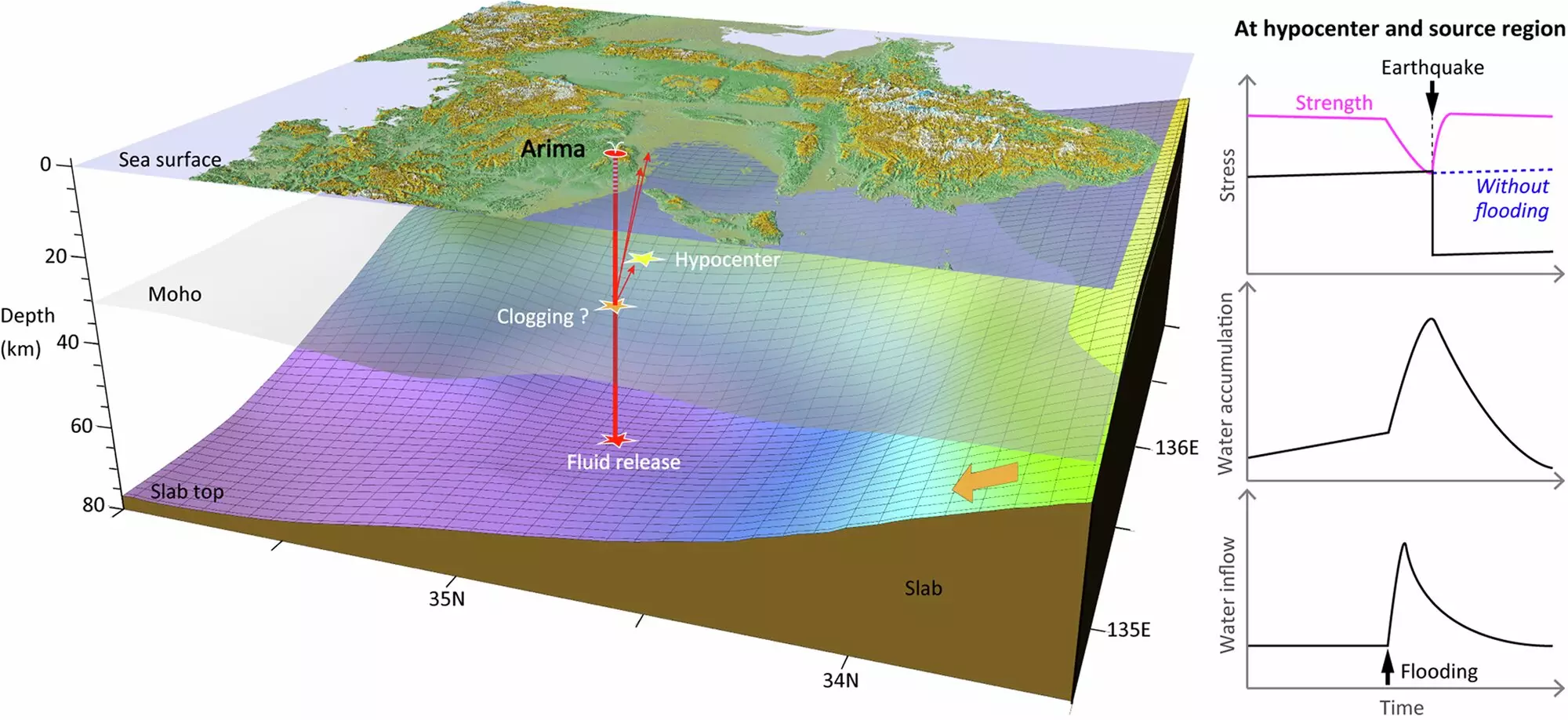In a significant development, scientists at the University of Tsukuba have put forth a compelling argument that the 1995 Kobe earthquake could have been influenced by subterranean water dynamics beneath the famous Arima Hot Springs. By employing advanced methods to analyze isotopic ratios of hydrogen and oxygen, as well as chloride ions in the hot spring water, this research offers an innovative perspective on the relationship between seismic activity and hydrogeological factors. The study, published in *Communications Earth & Environment*, hints at a link between underground flooding events and the destabilization of geological structures, specifically concerning water sourced from the subducting Philippine Sea Plate.
Isotopic analysis emerges as a vital tool in the ongoing quest to comprehend Earth’s geological processes. In the context of Arima Hot Springs, the distinct characteristics of the water—exhibiting salinity levels that are notably higher than those found in seawater—underline its unique geological origin. The water’s isotopic composition provides insights into its sources, with indications that much of it can be traced back to the Philippine Sea Plate. Although the isotopic characteristics align with theoretical models, there remains a notable absence of direct evidence linking these findings to earthquake occurrences. This gap prompts further investigation into the mechanisms that could precipitate seismic events.
The study reveals that the fluctuations in the volume of plate-derived water are not merely a modern phenomenon. Historical evidence relates a similar pattern to the Matsushiro earthquake swarm that transpired between 1965 and 1967, suggesting a broader geological trend. The researchers observed a marked decrease in plate-derived water after deep well drilling commenced in the 1940s, but intriguingly, a notable spike was recorded prior to the 1995 Kobe earthquake. This temporal alignment raises questions about the relationship between human activity—such as deep drilling—and natural seismicity.
It’s becoming increasingly clear that monitoring the dynamics of hot spring water may offer unprecedented predictive insights into earthquakes. The identification of increasing concentrations of chloride ions and radon in groundwater prior to seismic activity suggests that these hydrological variables merit more attention in seismic studies. With a substantial volume of plate-derived water—estimated to exceed 100,000 cubic meters—identified during the aforementioned period, the implications for fault dynamics and stress accumulation are profound. Such findings may pave the way for new predictive models that consider hydrological phenomena as key indicators of impending seismic events.
This research from Tsukuba University challenges established norms in the fields of seismology and hydrogeology, presenting a case that stresses the interconnectedness of geological and hydrological processes. As researchers continue to unravel these complexities, the importance of integrating multidisciplinary approaches becomes clear. Understanding the triggers of earthquakes through the lens of hot spring water dynamics is not only a fascinating academic pursuit but also a crucial step towards enhancing earthquake prediction methods, ultimately contributing to better preparedness in earthquake-prone regions like Japan.

